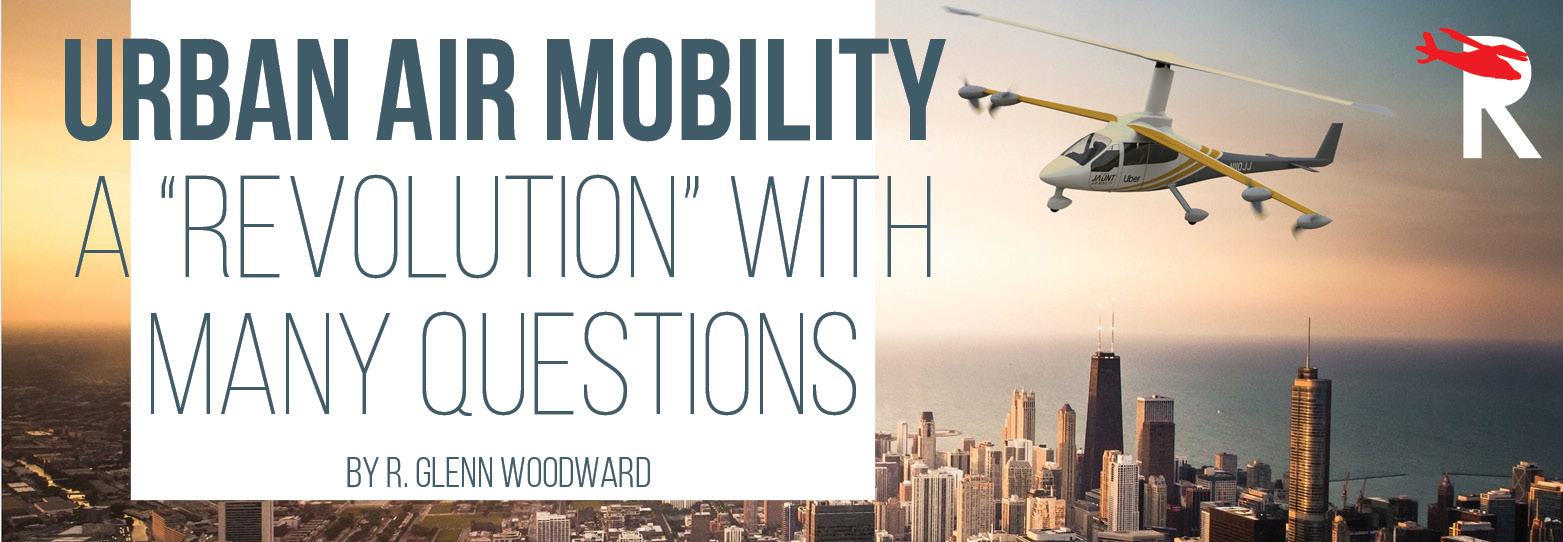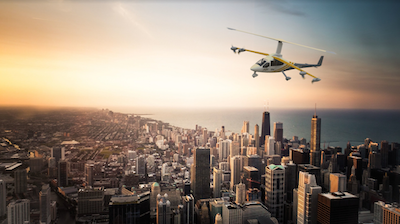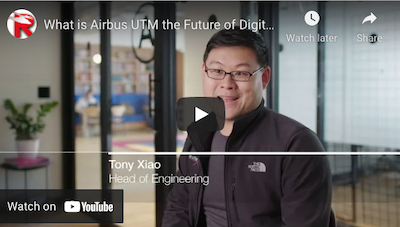|
Apr
19
2021
|
|
Posted 4 years 268 days ago ago by Admin
|
|

NASA says it best. It’s gonna take a revolution! They call it revolutionary vertical lift technology (RVLT), and how right they are. According to a PowerPoint presentation from Johnson, Silva (2018), a revolution in design, sizing, propulsion, blade design, rotor performance, geometry, and handling qualities will be required for urban air mobility (UAM) to evolve to a viable and sustainable system. Additionally, they say, their baseline system must “design aircraft, which will produce less than 50% of the climate-impacting emissions of today’s fielded technology” and those aircraft must be whisper quiet.
UAM is an obvious next-step in urban transportation systems. After Lyft and Uber run their course, what’s next in urban mobility? Elon Musk is headed underground with his tunnels. But aren’t tunnels just an upgrade to the London tube system? What’s left is above ground. Disney likes the Monorail. China and Japan are both strong proponents of a monorail system and are heavy users as well. Moreover, whereas monorails are technically “above ground”, they are still attached to the surface. That leaves the airspace directly above the ground, but not quite high enough to enter the national airspace system (NAS), as a last frontier.
Enter Urban Air Mobility
"Urban air mobility" (UAM) is defined as the safe and efficient system for air passenger and cargo transportation within an urban area, inclusive of small package delivery and other urban unmanned aerial system (UAS) services, which supports a mix of onboard/ground-piloted and increasingly autonomous operations.

When I first heard the term “urban air mobility”, I went glassy eyed imagining some wannabe writer coining a new buzz phrase for future glory. Continuing to read about the idea and the inevitable onslaught of operators clamoring to be that first flying car/taxi/bus/bathtub, I remembered an article I posted on LinkedIn back in May 2017 articulating my opinion about who will use these newfangled flying machines. As UAM became a real subject with credible professionals sharing their insights, it became apparent that the evolution of a notion I have been focusing on for over 30 years has come to fruition. I refer not to that airspace known as the NAS, but rather the underutilized, and yes, under-exploited, airspace directly above your house and above your local Starbucks.
I have been an air traffic controller, internationally, for over 18 years, and it is with that suitcase of experience that I unpack a few comments and observations on the reality of urban air mobility, its challenges, and its benefits. For a Cliff-Notes summary of UAM, FEV has a very good analysis and is realistic in its view while still sounding like it has a powered fleet in a hanger somewhere waiting for a buyer and a flyer (Urban Air Mobility (UAM)). Another very powerful analysis, mentioned above, comes from NASA; Johnson, Silva. (2018). “Observations from Exploration of VTOL Urban Air Mobility Designs.”
After reviewing many articles on the issues and concerns of implementation, it appears as though UAM is primarily, if not exclusively, electric/battery powered, and essentially non-fossil-fueled. However, there are still some writers and industry specialists who concede that traditional fossil fuels will continue to dominate the airspace, and industry, for quite a while. Two items of note for me are noise, and acceptance. While I am a strong advocate of traditional helicopter applications, I must concede that the noise from these aircraft can be irritating to some individuals. Especially the loudness of older models. However, like the technology of fixed-wing engines, helicopters and their engines also have come a long way. Advanced electric engines though, are touted as the new “quiet” standard. But, imagine a bumblebee or a hummingbird over your house and the sound it makes. Now imagine 10 of them hovering over your house – all day. Now, imagine 100-1,000 of them, the size of small SUVs flying over your home 24 hours a day. That noise is what you can expect as numerous UAM operators fight for their piece of the pie. Compare that to the gnashing of teeth expressed when there was the possibility of one or two helicopters flying overhead in the course of only one day. Either there will be an uptick in shotgun sales, or community meetings will be the latest big thing in reality show trends!
Acceptance of electric-powered, passenger-carrying aviation vehicles is still evolving. With reference to emissions, electric vehicles, in and of themselves, are very green. However, as electric vehicle use increases, the demands on the U.S. power grid will be elevated significantly by recharging, thus lowering net emissions-reduction effects and efforts. This particular “inconvenient truth” is mostly ignored or glossed over by many proponents of electric vehicles of any style. Noteworthy is this fact in the NASA report: today’s single main rotor (SMR) technology vehicles, fossil-fueled by the way, are achieving a 43% emissions reduction from new technology integrations in the “class B” category.
This is all very exciting stuff for futurists and sci-fi enthusiasts, but what I want to question further is the here and now. In other words, how will cities, communities, individuals, and private operators integrate UAM models using current technology, vehicles, procedures, and resources? Will the first operator just takeoff and force the system to catch up? Without a full-blown FAA regulatory system with accompanying rules in place, who will simply wait on the sidelines with a functioning machine while the rest of the herd catches up with newer and better flight systems, losing potentially millions or billions of profit and branding as dust collects on their blades? I would argue; no one! Infrastructure is also a huge challenge – enormously huge. Kind of like the chicken/egg question: will UAM vehicles drive the infrastructure direction, or will prebuilt infrastructure drive the type of vehicles that manufacturers design? If a city decides to sponsor UAM operations, will the city have to get an FAA certificate Part 139/135/121/91? Where will liability lay?
Many issues face the implementation and integration of low-Earth-proximity flight operations that include, but are not limited to: safety, categorization evolution, regulation, new technologies (including backward-integration), command authority, air traffic services, available or applicable flight paths, not in my backyard (NIMBY) airspace owners, and noise: to name just a few. Speaking of “NIMBY” (That acronym now morphs into “NAMBY” or “NOMBY” – Not Above/Over My Backyard). Another question to consider: Exactly how much airspace over one’s house will a homeowner “own” and have jurisdiction/authority over? That will come into play as operators file for airspace usage. Negotiations by attorneys for deals made will be in the hundreds of thousands of dollars— if not more. That is a cottage industry by itself. I can envision many concerns that will affect how operations are conducted.
The benefits of such an air mobility transportation system are obvious. The main one being the amount of time saved. Wherever you need to be, whether it’s grandma’s house across town or that Chamber of Commerce network meeting you’ve been looking forward to attending all month; instead of arriving with 10 minutes left, you can arrive early and enjoy the best hor d'oeuvres and make that one critical connection. Other benefits include less stress, less emissions from your regular vehicle, etc. In fact, you can name your favorite benefit and create an entire PowerPoint presentation for the next town council gathering.

Operational Control/Authority
Air Traffic Controllers are trained to, and expect to, speak to a trained professional on the other side of the microphone, such as a professional pilot. With the concept of autonomous flight, who commands the UAM vehicle? If it is a fleet operation, will there be a “flight controller/dispatch” office to phone, or call on the radio? Or will controllers be speaking to ordinary citizens who just purchased their own private UAM to fly to grandma’s house? What about airframe separation? With projections of several fleet operators for each city/metro area, how many vehicles will be in the air at the same time? Will they follow local train/tram routes, or will they have their own pre-approved routes assigned specifically to each machine? Will individual operators be able to “flight plan” unique routes or change them in-flight? Who hasn’t seen futuristic video simulations of flying machines picking up a person or a small group and whisking them off to a rooftop or landing pad somewhere in town? In those videos, there is one machine and perhaps one more in the distant background. Imagine 10 machines and 1,000 in the background, all vying for landing and routing priority. If these vehicles are to be used as/in-place-of taxis, buses, cars, metro trams/etc., who limits the quantity of operators? On the ground, those same transportation formats grow seemingly without restriction. Will the ground operators be replaced on a one-for-one basis, or will we simply add more machines to the urban transportation system, be they ground or air? These are heady questions indeed.
Currently, the FAA has a 500-foot AGL minimum altitude for airplanes and helicopters. Will that be lowered for these new machines? Imagine the morning rush with one or even two controllers in a nearby Class-Delta tower on duty from 7:00 a.m. to 8:00 a.m. answering 2,000 to 3,000 individual requests/calls for transit approval, outside of the, hopefully, automated system for the rest of the fleets. The FAA can’t even get “Next-Gen” ATC up and running for a set of operators who are extensively and intensively trained, on both sides of the microphone for aircraft that are tried and tested. Who will develop a system to monitor, track, and separate all these machines operated by your second cousin? One idea I thought of is to use the new 5-G cellular system. With some adjustments, the plethora of antennas could identify and locate each machine in real time to help avoid mid-air collisions. Even so, new minimum separation standards may demand even more airspace than some cities have available. In Denver, we have several GA airports in heavily populated areas that have their own airspace sharing challenges. Will UAM vehicles be allowed to enter the control zone at-will and how does that affect traffic patterns? Who has priority: The city’s UAM? The Cessna 152 on downwind? Or the G6 turning base on a visual approach?
And none of this addresses the autonomy aspect of operators.

VIEW VIDEO
A subject I haven’t read about in any other article is— bird strikes. With new lower altitudes over city boundaries, what is the increase in bird-strike potential? At airports, there are programs in place to mitigate the presence of birds using natural predators and repellents. Will cities now implement similar programs to keep all birds away from an entire city? Who becomes liable in the event of a bird-strike over the city with a program in place? Those plans will certainly raise the ire of wildlife proponents. Richard Barber ([email protected]) of RHB Airport Consultancy Ltd.in the U.K. has decades of experience with this. If you want detailed information on wildlife risk mitigation, contact him!
What I think, it comes down to now is the “revolution” in RVLT. Similar to when JFK declared we would put a man on the moon by the end of the1960s, the technology didn’t even exist then, but it happened, and all the money came through the government. In this current case, private enterprise and entrepreneurship will drive the venture forward and the right vehicle will rise above the noise.
All above questions aside, whatever comes will surely be amazing and...revolutionary.
Glenn Woodward is an ICAO Air Traffic Control Instructor and a TLA Tactical Applications Specialist / Consultant. Glenn may be reached at [email protected].